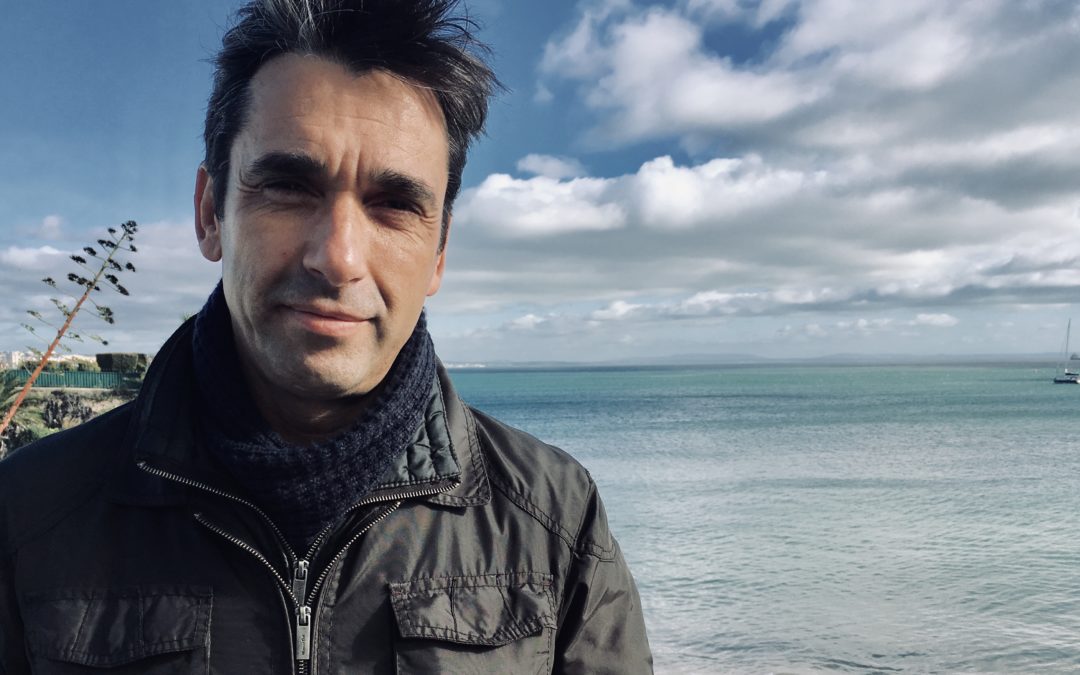Meet Carlos Rego, a biomimicry specialist and designer at Logoplaste Innovation Lab in Portugal. At Logoplaste, Carlos and his team developed the Vitalis water bottle design based on the spiral patterns found in pine trees’ trunk and limbs. This design incorporated these helical structures, making the bottle more durable without adding extra weight, saving 250 tons of raw materials each year. Carlos sat down with biomimicry educator and biologist Sherry Ritter to share how he has incorporated biomimicry into his work and his life. Watch to hear some of the advice he gives to people just starting to practice biomimicry.
What is your current job and how do you incorporate biomimicry into your work or life?
I’m currently the head of Design and Biomimicry Thinking at the Logoplaste Innovation Lab.
Biomimicry plays a critical role in the way I conduct my work and my life. I see biomimicry not only as a branch of design and science but also as a philosophy that constantly guides all my actions.
How did you get to where you are today? What paths led you to biomimicry?
My main background is product design and, through my career, I played an active role in creating products that were environmental crimes, and that were committed with the sole purpose of addressing a human or marketing need. That led me to a growing frustration and made me question my role as a designer and if this blind human-centered innovation was really the only way to address those needs. For quite a long time I’ve been looking for more sustainable ways of doing things, but it was in 2007 that my life effectively changed when I first read about Janine Benyus and biomimicry in a Business Week article. Then I watched her first TED talk and felt completely enlightened by her words. I had finally found an answer to my doubts. Next thing, I was downloading documentation about biomimicry from the Biomimicry Institute and started to study it on my own. In 2009, I had the first opportunity to apply biomimicry to a real project, the Vitalis bottle. Based on the success of that project, I attended a biomimicry introductory workshop in Eindhoven, where I met Dayna Baumeister, who urged me to move to the next level and do the Biomimicry Specialist Program, which I did in 2012.
What advice do you have for others who are looking to enter the field of biomimicry or hoping to incorporate it into their work?
Be open minded and do not be afraid of not knowing. As a designer, I’m used to starting a new project with many questions in my mind, trusting that I’ll be able to overcome these doubts through the design thinking methodology. But when I started to study biomimicry and biology, my ignorance grew exponentially! At first that feeling can be scary, but if you love to study and learn, you will have your hands full forever. Not knowing actually became a key motivator for my work, helped me build a more a holistic vision of everything, and made me discover many, many wonderful new things.
How are you making an impact?
Since the beginning, the company where I work, the Logoplaste Innovation Lab, has been extremely supportive of my biomimicry work and they actually fully financed my Biomimicry Specialist program. Since our first Vitalis project, we’ve witnessed a growing interest in biomimicry both by our team and by our external partners. The Logoplaste Innovation Lab became the first packaging developer company in the world to adopt the biomimicry thinking methodology, putting it at the core of its innovation process. That provided us a key competitive advantage.
What have been some of the most helpful resources for you?
The first resource was, with no doubt, the AskNature platform. It was extremely helpful, especially in the beginning, when I was not so experienced in the process of research for natural models. But even nowadays I go there often to look for some natural models and case studies. For the critical part of studying natural models in-depth, I rely on primary and secondary source readings, from magazines and news to specific biology books and research papers.

